In today’s world, most of us spend a big chunk of our day sitting at a desk. It’s super important to practice good ergonomic habits to avoid common musculoskeletal issues that many office workers face. Maintaining a healthy posture with the right equipment and habits isn’t just important for our physical health, but it also helps us be more productive and comfortable at work.
This article is here to help you create a workspace that’s good for your well-being and efficiency, addressing the concerns over health risks associated with sitting for long periods and having an incorrect office setup.
The guide will cover essential furniture for ergonomics and posture in the office, showing how the right chairs, desks, and setups can reduce the risk of posture problems and discomfort. It will also explore the technology and tools available to promote a better working environment tailored for healthy posture.
Ergonomic and posture office essentials
If you’re looking to make changes without spending too much, the article offers tips on budget-friendly ergonomic enhancements that can make a real difference. Each section offers practical suggestions to help you create an ergonomic workspace, reducing back problems and other related issues and making your work life more productive and free of pain.
Related: Find how the right office environment helps your mental-being here in this article.
Choosing the Right Ergonomic Chair
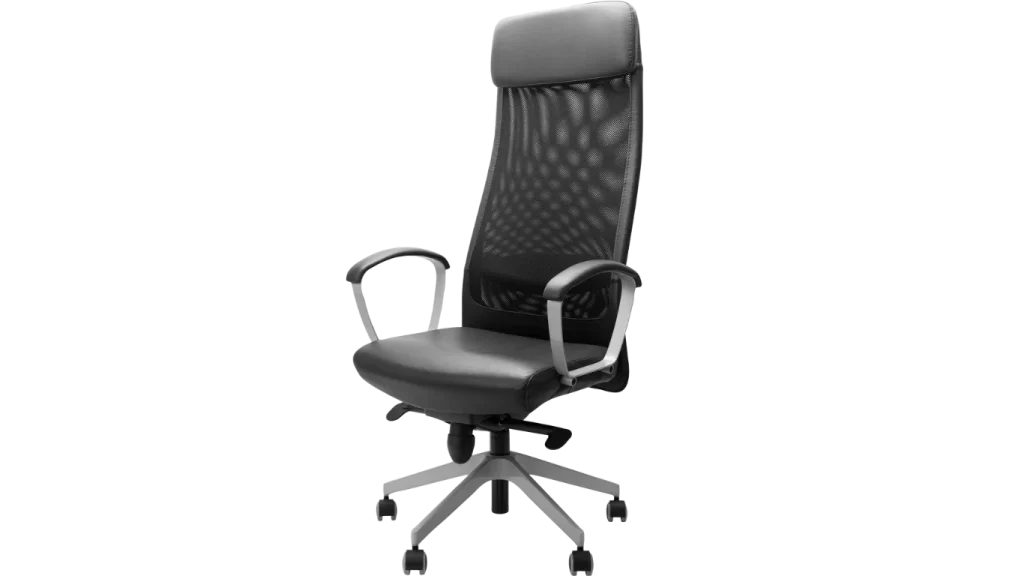
Investing in a high-quality ergonomic chair is vital for maintaining correct sitting posture. An ideal chair should have adjustable height, lumbar materials, and armrests to support different body shapes and sizes. Proper lumbar support is important for maintaining the natural curve of your lower back, reducing both strain and discomfort. For those seeking alternative seating options, saddle chairs are recommended as they keep the hips at an open angle, which helps maintain an excellent lumbar spine curve.
The Importance of an Adjustable Desk
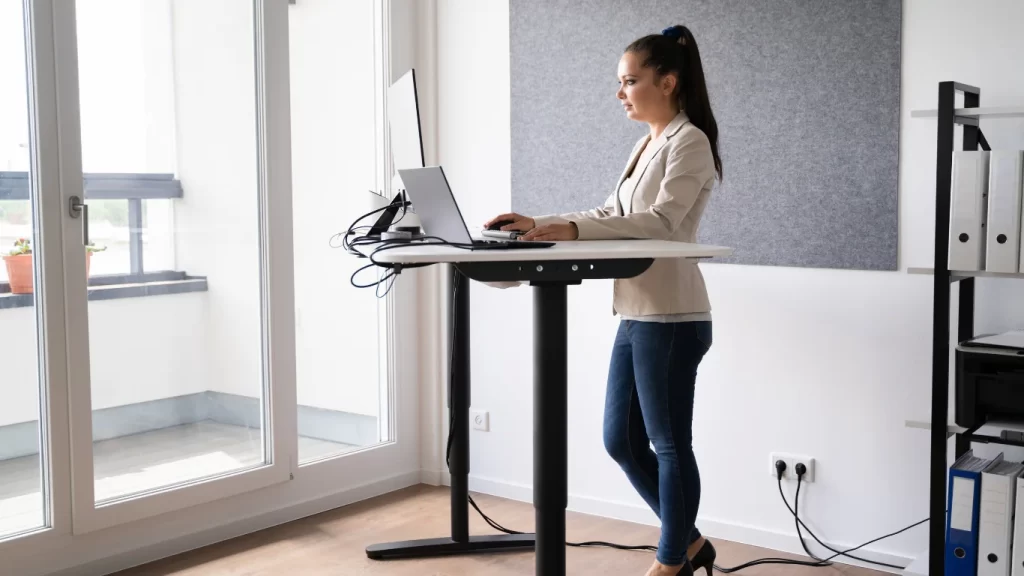
The versatility of a standing desk or an adjustable desk riser is invaluable in an ergonomic office setup. These desks allow users to alternate between sitting and standing, which can alleviate pressure on the spine and prevent stiffness associated with prolonged sitting. A standing desk should be complemented with an anti-fatigue mat to provide cushioning and support, minimizing discomfort during prolonged periods of standing.
Optimal Desk Accessories for Posture Support
To enhance ergonomic benefits, incorporating the right desk accessories is vital. A footrest can vastly improve circulation and reduce pressure on the legs and lower back, making it particularly beneficial for shorter individuals. Additionally, positioning a document holder at eye level or slightly below can reduce neck strain. Ensuring a clutter-free desk will also minimize unnecessary reaching and twisting movements, which can strain the back and shoulders.
Technology and Tools to Promote Better Ergonomics
Ergonomic Keyboards and Mouses
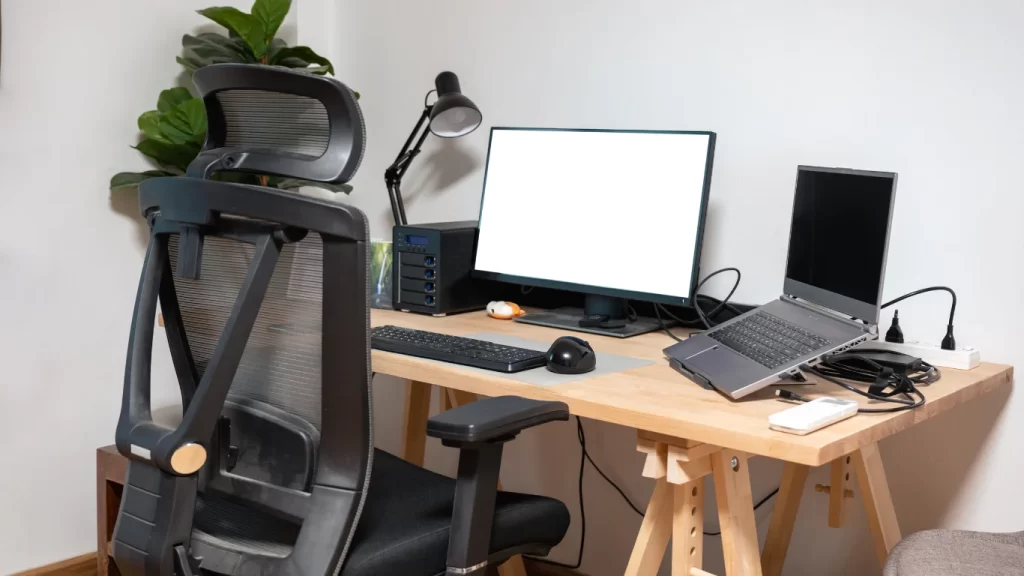
- Ergonomic Keyboards: These specific keyboards are designed to reduce stress on the forearms, wrists, and hands by aligning them in a natural position. Options like the Kinesis® FreestyleTM adjustable split keyboard and the Goldtouch Go! Travel Keyboard offer unique shapes and designs that cater to individual needs, such as split layouts to minimize wrist deviation and compact models without a numeric keypad to bring the mouse closer to the body.
- Ergonomic Mouses: Traditional mouses can cause strain and injuries, but ergonomic alternatives like the vertical mouse keep the arm in a neutral position, reducing tension. Specialty ergonomic mice cater to various needs, including options for left-handed users, enhancing comfort and reducing the risk of repetitive strain injuries.
Monitor and Laptop Stands for Ideal Viewing
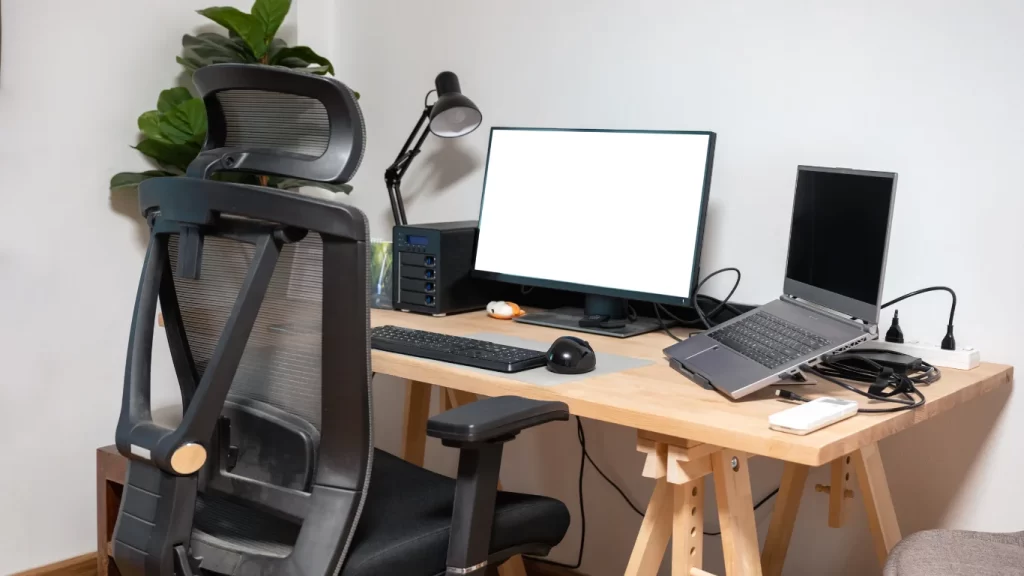
- Monitor Stands: Proper monitor placement is crucial for avoiding neck and shoulder strain. Monitor risers adjust the screen to an optimal height, aligning the top third of the monitor at eye level, which helps maintain a natural posture. This adjustment is essential for reducing discomfort and enhancing workplace ergonomics.
- Laptop Stands: Laptop stands, such as the Rain Design iLevel 2 and the Lifelong Upryze Ergonomic Laptop Stand, elevate the screen to eye level, promoting better posture. These stands are particularly beneficial for those who use laptops extensively, as they allow for adjustments in height and angle, accommodating both sitting and standing positions and ensuring that the keyboard and screen are at optimal levels for comfort and efficiency.
Small Changes, Big Impact: Budget-friendly Ergonomic Enhancements
The Role of Footrests and Lumbar Support
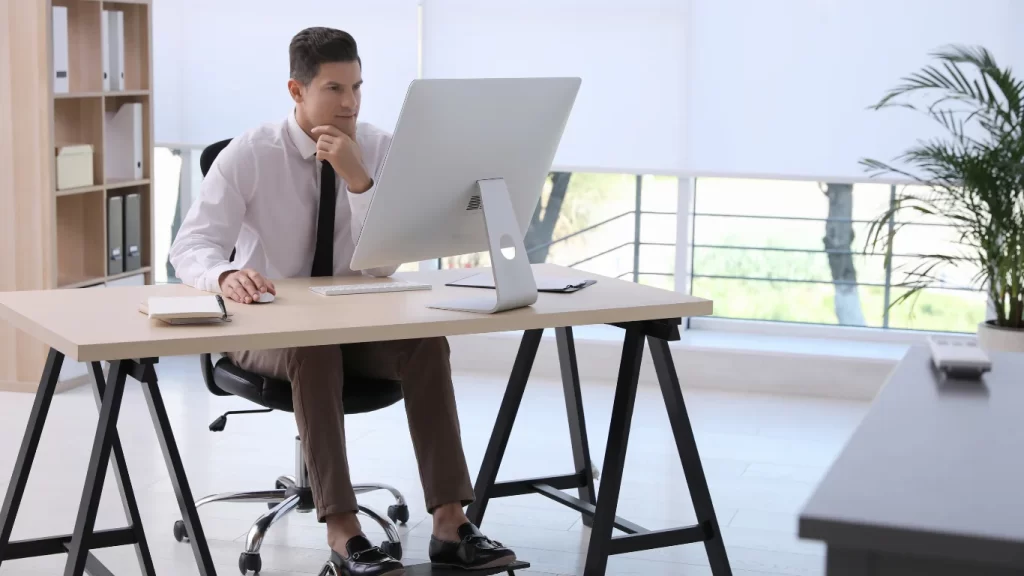
- Ergonomic Footrests: Introducing an ergonomic footrest to your workstation is a simple yet effective way to enhance posture and alleviate musculoskeletal issues. These footrests are designed to support the feet and promote a more neutral sitting position, which reduces pressure on the lower back and also improves circulation. They are particularly beneficial for individuals whose feet may not naturally reach the floor when seated. Features such as height adjustability and tilt mechanisms allow for customization to individual needs, increasing comfort and reducing the risk of back pain.
- Lumbar Support: Incorporating a memory foam lumbar pillow can significantly improve lower back support, especially for those who experience discomfort during prolonged periods of sitting. These pillows are designed to conform to the contour of the back, providing targeted support that soothes and prevents back strain. Portable and easy to integrate into any chair, they are an essential addition for anyone looking to improve their seating ergonomics.
Improving Lighting and Workspace Layout
- Optimizing Office Lighting: Poor lighting can lead to eye strain, headaches, and overall discomfort, affecting productivity and well-being. Upgrading to ergonomic office lighting solutions such as direct-indirect lighting systems can help minimize glare and distribute light evenly, reducing the risk of eye strain. For individual workstations, consider adjustable task lighting that allows employees to control the intensity and direction of light, catering to their specific needs.
- Enhancing Natural Light Access: Maximizing exposure to natural light is crucial for maintaining energy and focus. Positioning desks near windows or using light-filtering curtains to reduce glare can create a more inviting and productive environment. For areas without direct sunlight, implementing full-spectrum light bulbs can mimic natural light, offering similar benefits and enhancing mood and alertness among employees.
By implementing these budget-friendly ergonomic enhancements, individuals can create a more comfortable and also productive workspace that promotes health and efficiency.
Maintaining an Ergonomic Workspace
Regular Movement and Alternating Positions
- Encourage Regular Movement: To combat the risks associated with prolonged sitting, employees should be encouraged to incorporate regular movement breaks throughout their workday. These microbreaks can include simple activities such as walking around the office, stretching exercises at their desk, or light physical movements like squats or lunges. Such activities stimulate blood flow, delivering oxygen and nutrients to the muscles and organs, which enhances overall circulation and reduces muscle tension.
- Alternate Between Sitting and Standing: Utilizing standing desks or adjustable workstations allows employees to alternate between sitting and standing. This variation helps ease the strain on the spine and promotes a more dynamic working environment. Setting the desk height so that elbows are at a 90-degree angle when standing comfortably upright ensures that the workstation is ergonomically optimized.
Workspace Adjustments and Upgrades Checklist
- Chair and Desk Adjustments:
- Adjust the chair height so that the eyes are level with the top of the computer screen.
- Ensure the chair provides adequate lumbar support and allows the feet to rest flat on the ground or a footrest.
- Set the desk height so that the arms rest parallel to the floor, reducing strain on the shoulders and wrists.
- Monitor and Keyboard Placement:
- Position the computer monitor so that the top of the screen is perfectly at or just below eye level to minimize neck strain.
- Place both the keyboard and mouse within easy reach, allowing for relaxed arm and wrist positions.
- Environmental Adjustments:
- Enhance lighting conditions to reduce glare on computer screens and minimize eye strain.
- Maintain a comfortable temperature and noise level that fosters concentration and productivity.
- Ensure that the workspace promotes good posture by adjusting the position of monitors, keyboards, and seating.
By implementing these strategies, employees can maintain an ergonomic workspace that minimizes musculoskeletal issues and enhances overall well-being and productivity.
Conclusion
We talked about creating a workspace that’s good for your posture. It’s all about bringing in furniture, technology, and tools that are designed with ergonomics in mind. Choosing the right ergonomic chairs, adjustable desks, and supportive accessories like footrests and lumbar supports is super important for keeping your muscles and bones happy while you work. Adding adjustable monitors, ergonomic keyboards, and mice takes things to the next level, showing that we’re committed to making sure you’re working comfortably and efficiently.
But it’s not just about physical comfort – it’s about creating a culture of health awareness and taking proactive steps to prevent common workplace issues. The suggestions we’re sharing are meant to guide you and inspire you to keep exploring and adapting within the world of workplace ergonomics. As we all work towards improvement, we’re on a journey to a future where discomfort at work is the exception, not the rule. This benefits everyone’s health and productivity.
FAQs
What is the ideal ergonomic posture for sitting at a desk?
To achieve the correct ergonomic sitting posture in the office, select a chair that adequately supports your spine. Adjust the chair’s height so both your feet are flat on the floor, or use a footrest to ensure your thighs remain parallel to the floor. If your chair also has armrests, they should be positioned to allow both your arms to rest comfortably with both your elbows near your body and your shoulders relaxed.
What benefits do proper office ergonomics offer?
Proper office ergonomics ensure that your desk is at the appropriate height for comfortable leg positioning under the desk, with enough space to cross your legs freely. Your forearms and upper arms should maintain an angle between 90 and 110 degrees, with your upper arms aligned with your torso, promoting better posture and reducing the risk of discomfort.
How can you set up an ergonomically correct office space?
To make your office ergonomically correct, follow these four steps:
Push your hips as far back as possible in the chair.
Adjust the seat height so your feet are flat on the floor, and your knees are at or slightly below hip level.
Set the backrest to a reclined angle of about 100° to 110°.
Adjust the armrests to keep your shoulders relaxed.
What are the steps to correct your posture while working at a desk?
To maintain correct posture in the office, keep these guidelines in mind:
Ensure your feet are flat on the floor or a footrest.
Avoid crossing your legs, knees, or ankles.
Maintain a small gap between the back of your knees and the chair.
Position your knees at hip level or slightly lower.
Keep your ankles in front of your knees and relax your shoulders for optimal posture.





